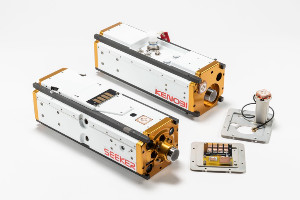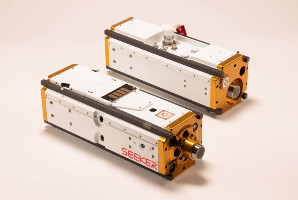| Satellite | Seeker 1.0 (Seeker Robotic External CubeSat Inspection Vehicle DTO) |
|---|---|
| Form factor | CubeSat |
| Units or mass | 3U |
| Status | Reentry 2023-12-05. Was operational until 2019-09-17, 1 day as planned? (Website as 2020-04-09) |
| Launched | 2019-04-17 |
| NORAD ID | 44533 |
| Deployer | NRCSD-E (External NanoRacks CubeSat Deployer) |
| Launcher | Antares |
| Deployment | Deployed from Cygnus on 2019-09-16 |
| Organization | NASA Johnson Space Center |
| Institution | Space agency |
| Entity type | Government (Civil / Military) |
| Country | US |
| Launch brokerer | Nanoracks |
| Oneliner |
Free-flying robot poised to make its first test inspection in orbit with the Cygnus station cargo resupply vehicle. |
| Description |
Demonstrate operations around another spacecraft safely and demonstrate controllability and imaging performance. This will help build confidence in the design, which will enable to take on more aggressive tasks in a future flight leading up to the first operation around a human spacecraft. Once we get 30 meters from Cygnus, we’ll stop and take several high-resolution images of the craft. These images will demonstrate the vehicle’s core inspection capabilities. Our second piece of hardware, Kenobi, stays inside the NanoRacks deployer during the mission. Kenobi’s job is to act as a translator between Cygnus and Seeker and to store all of Seeker’s data. Fully functioning robotic free flyer capable of six degrees of freedom movement via 12 cold-gas Nitrogen thrusters developed using plastic three-dimensional printing. Seeker’s inspection camera is capable of capturing stills at up to 13-megapixel resolution. Seeker features a variety of sensor packages to help it safely navigate around Cygnus. Minimum success criteria is to deploy, self-arrest, take at least one high-resolution image of Cygnus, and transfer that image to the ground. Seeker is fully successful once the vehicle maneuvers about its six axes. Seeker attempts additional stretch goals as time and resources allow. Seeker transmits data and receives commands via 5 GHz Wi-Fi. Kenobi is the data command and data relay box for Seeker. It resides in a NanoRacks deployment tube adjacent to Seeker and does not deploy. Kenobi acts as the translator between Seeker (which speaks 5 GHz Wi-fi) and Cygnus (which speaks RS-422). Kenobi stores all of Seeker’s images and data for downlink post-mission. While at the International Space Station (ISS), Seeker and Kenobi remain quiescent onboard Cygnus. After Cygnus un-berths from ISS, it moves to an altitude approximately 70 km above ISS and maneuvers to point its pressurized cargo module towards Earth, and the NRCSD-E along the positive orbital velocity vector. Seeker is deployed at 0.5 m/s via the NanoRacks External CubeSat Deployer that is mounted to Cygnus’ Service Module. Seeker is pre-programmed with set waypoint commands. After each major maneuver, Seeker goes into a holding maneuver to take high resolution images and to wait for engineers on the ground to evaluate the vehicle’s health and determine if it’s safe to proceed. If it’s not safe due to insufficient propellant of battery life, Seeker will be commanded to end its mission and fly away from Cygnus. At any point, Seeker’s propulsion system can be inhibited. |
| Results |
Seeker was deployed in September 2019, and collected over 100 images of the Cygnus spacecraft. |
| Sources | [1] [2] [3] [4] [5] |
| Photo sources | [1] [2] [3] |
| Keywords | Formation flying, Free-Flying Inspector, Propulsion |
| Space photos |    
|
| On the same launch |
Last modified: 2024-09-07





